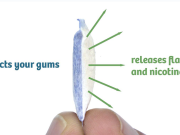A total of 35% cited the lack of independent long term research in favour of vaping, for their lack of trust, while 31% mentioned a concern about the lack of information available on the harm profile of different vape models. Non-surprisingly other factors causing this distrust included negative media reports and studies, inconsistencies among global governments, the harsh stance of the World Health Organisation (WHO) and the growing black market for the products.
The tragic result of misinformation
Sadly, these figures confirm exactly what public health experts have been saying about the danger of misinformation. These percentages are even more tragic coming from the UK, than if they were from elsewhere, given the country’s progressive approach towards tobacco harm reduction. In fact the government’s recent independent Kahn Review said vaping plays a central role in a smoke-free future across the country. While evidence released in 2022 by the Office for Health Improvement and Disparities (OHID), formerly known as Public Health England (PHE), re-confirmed that vaping was at least 95% safer than smoking.
Based on 7-year evidence, the new scientific OHID report reaffirmed findings from 2015. Sharing the data last December at The E-Cigarette Summit, Dr. Debbie Robson of Queens College London highlighted that although not risk-free, vaping exposes people to much lower levels of toxicants, in comparison to smoking.
The review included 413 studies since 2018, and when considering a list of known toxicants found in tobacco and vaping products, the study found that vaping exposes people to much lower level of toxicants, compared to the levels in smoking. “In terms of health risks, we said that vaping imposes a small fraction of the risk of smoking in the short to medium term. Consistently, vaping exposes people to much lower level, significant lower levels of risk than smoking,” said Robson.
She added that the impact of vaping depends on who is vaping and why, explaining that context is key. For example the person’s previous and current smoking history, medical history need to be taken into account. Additionally one would need to look at any health conditions a person may be suffering from and more importantly the reason why they are vaping. Last but not least where someone lives and what they are exposed to should also be considered.
Smokers prefer vapes over traditional NRTs
Meanwhile, 2022 data released by PHE has indicated that more smokers seeking to quit cigarettes are turning away from using traditional NRTs, and instead using more effective alternatives such as vapes.
The number of smokers trying to quit who are doing so via traditional NRTs through the National Health Service (NHS) Stop Smoking Services hit a record low of 3.5% in 2019/20, down from 7.3% in 2013/14. That’s a 52% drop in six years revealed the PHE. Given that smoking rates keep dropping, this means that more smokers are turning to innovative nicotine alternatives.
The figures also indicated that only 1.8% of smokers using the NHS service successfully quit after four weeks in 2019/20. This represents a 51% decrease from 13/14. Despite this, the percentage of smokers in England continues to drop, and currently sits at an all-time low of 13.9%, while the number of ex-smokers who now vape has risen from 11.7% to 12.3%.












